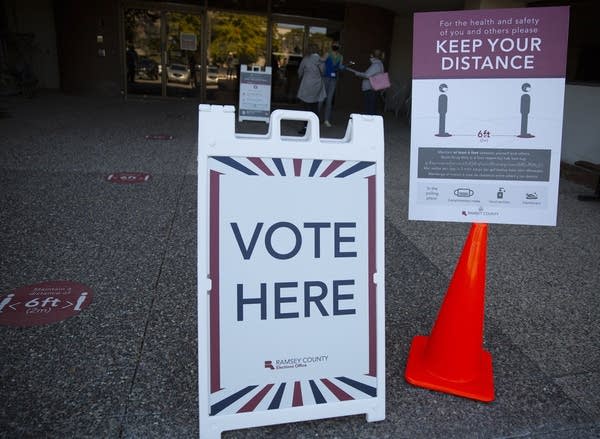Election 2020: Voting in person? Here's what you need to know

A sign outside the Ramsey County Elections Office tells voters to maintain social distance during early voting Sept. 18, in St. Paul.
Christine T. Nguyen | MPR News file
Go Deeper.
Create an account or log in to save stories.
Like this?
Thanks for liking this story! We have added it to a list of your favorite stories.


